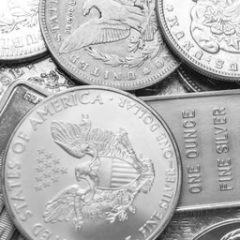John McFarland
Several online numismatic coin forums have been abuzz lately with people new to the hobby, often wondering if the interesting coin they discovered in their change is valuable. Many of these are young people, often mesmerized by a run-of-the-mill cent from the time I was born. Though only slightly over forty years of age, from their perspective this coin represents something from Europe’s Dark Ages.
Like many of us more experienced collectors they begin to take an interest in the history of the coin, or the time from which it came. Unfortunately, all too often one of our fellow hobbyists, masked by the anonymity of the internet, replies to the inquisitive would-be numismatist in a condescending tone, deriding them for not knowing the basics of the hobby.
More often than not, the would-be numismatist responds as one would expect: their interest dies, and they go on to pursue other things. This author intends to combat that phenomenon, and introduce new collectors to the basics. More experienced readers may benefit from a refresher, as well.
Tips for Purchasing Coins Online
First and foremost, research the reputation of the seller. This should go without saying, but eager buyers continue to be ripped off by a few people who are eager to dump their cleaned and damaged junk onto the unsuspecting, despite having been called on it multiple times by former customers. Most auction sites have the ability to review sellers and to read other buyers’ reviews.
Secondly, read and understand the seller’s return policy. If the coin in hand does not look like the coin in the photographs online, what can be done to rectify it? Will you get a full refund? Who pays shipping costs?
Thirdly, closely examine the photos of the coin. Photos should be straight on, not at an angle. Some sellers hide hairlines (signs of cleaning) and other problems by shooting the photograph at a sharp angle, causing the light to reflect differently and the hairlines not to show. You could request a different photograph from the seller, or you could simply move on to the next coin.
Fourthly, consider that many rare, or “key,” coins are being counterfeited in large numbers, mostly in China. It is a problem as old as money itself, and online auction sites are rife with counterfeits. Inexperienced numismatists can get excited over the cheap 1916-D mercury dime and think they’ve scored an auction win, only to send it off for grading and have it returned as a counterfeit. Therefore, as a rule, when buying key coins, only buy those certified and encapsulated by a reputable third party grader.
Lastly, avoid online coin sellers who claim they do not know anything about the coin, or coins in general, or are merely settling an estate. As a rule of thumb, these people do know, in fact, something about coins and use ignorance to create a layer of plausible deniability for when their problem coins are discovered.
While most people reading this have probably heard these bits of advice before, it never hurts to revisit the basics. Famous football coach Vince Lombardi used to begin each season by introducing himself to that year’s team of professionals by holding up a football and announcing, ”Gentlemen, this is a football.”5 Many were undoubtedly shocked or perhaps insulted that he would assert something so basic to a group of professionals. Lombardi’s position, however, was that each season he began with the most basic elements of the game. Instill excellence In the fundamentals. He believed without mastering those fundamentals, his team could never hope to achieve greatness. In the same way, numismatists should master these fundamentals and periodically review them.
Source: MONEY.ORG

